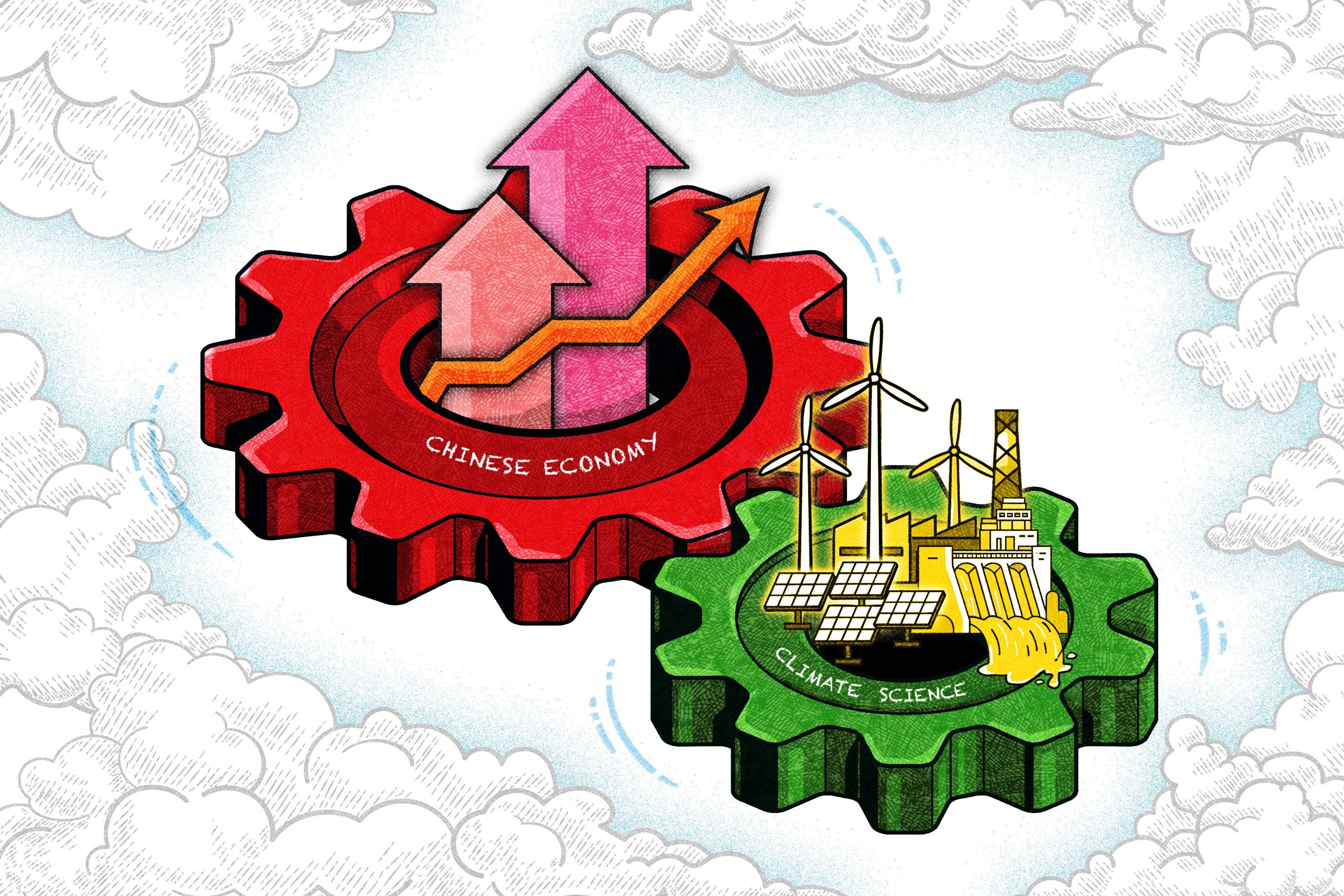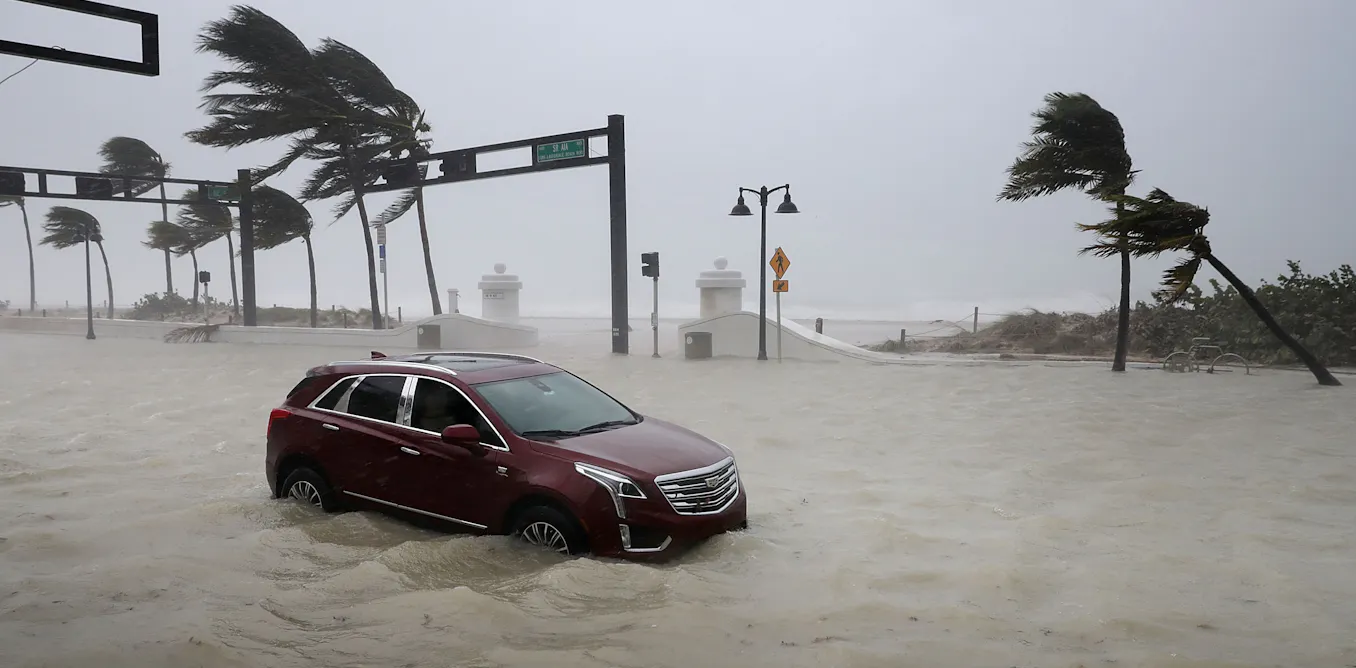Copyright scmp

China and the United States often find themselves sharply at odds on policy, but nowhere is the divide between the rival powers more striking than on climate change – as their leaders made clear at last month’s United Nations General Assembly in New York. Even as US President Donald Trump dismissed climate change as “the greatest con job ever perpetrated on the world”, his Chinese counterpart, Xi Jinping, used the moment to unveil Beijing’s latest strategies for addressing the issue. Xi said China sought to cut its emissions by 7 to 10 per cent from peak levels by 2035, while increasing the share of non-fossil fuels in its energy mix to over 30 per cent, with a focus on more wind and solar power capacity. The transition to green and low-carbon energy was “the trend of the time”, Xi said, while urging the international community to “stay focused on the right direction”. As climate change intensifies, Beijing is channelling scientific insights to pursue an ambitious transformation of China’s infrastructure. Driven by data showing rising risks of floods, heatwaves and extreme weather, Chinese policymakers are re-engineering urban landscapes with an emphasis on resilience – to meet the challenges of a hotter, wetter and more unpredictable climate future. From its sprawling “sponge cities” designed to absorb torrential rains to massive renewable energy investments and a goal of reaching carbon neutrality by 2060, China has turned climate science into an engine of economic growth. He Guojun, a University of Hong Kong professor who specialises in environmental economics, said Trump’s contrasting approach reflected the “green paradox”, a concept articulated by German economist Hans-Werner Sinn in 2008. He explained the paradox this way: in a world that anticipated renewable energy replacing fossil fuels by a given date, “the harder the deadline or the stricter the regulations, the stronger the incentives for resource owners to sell and use them now”. “Maybe Trump knows exactly that in 30 years, no one is going to use them,” he said of fossil fuels. “That is the reason he wants to push every country to purchase US oil and fossil fuels and asks the US not to develop renewable energy because this industry has been dominated by China.” In China, by contrast, government subsidies for sectors related to renewable energy and the 2060 zero-carbon goal had “motivated or at least incentivised a lot of firms to get into this industry”, the HKU professor noted. “China already dominates the [global] manufacturing of solar panels, batteries and everything related to renewable energy. The sooner it is able to help the world transition to a greener future, the larger the benefits it is going to gain.” According to He, China and the US have different incentives and both are carrying out “policies that make sense” economically. Last year, China suffered economic losses of as much as 400 billion yuan (US$56 billion) from natural disasters. Of this, 65 per cent was the result of heavy rainfall causing floods, landslides and mudslides, according to the national disaster prevention, reduction and relief authority and the Ministry of Emergency Management. While investing in climate-resilient infrastructure comes with a price tag, the cost of inaction could far exceed those expenses, economists and climate change analysts have warned. They also noted that tackling climate change could stimulate economic growth by creating jobs, strengthening local industries and driving the development of new insurance products – benefits that are especially valuable during times of economic downturn. He, who also directs the HKU Jockey Club Enterprise Sustainability Global Research Institute, said more Chinese cities should prepare for flooding. “China’s big challenge right now is how its urban infrastructure can deal with unpredictable heavy rainfall,” he added. Flooding was “extremely difficult to predict”, He said, drawing a contrast with other climate-related disasters like typhoons, which people can prepare for days in advance. In July, dozens of people died in Beijing and neighbouring Hebei province after heavy rainfall suddenly overwhelmed drainage systems and caused severe urban flooding. China experiences more significant flooding than any other country, according to a peer-reviewed paper published last year by researchers at Wuhan University and Shandong University. The researchers estimated that floods affected 66 per cent of China’s land mass and about half its population, while damaging about 70 per cent of property and infrastructure. According to He at HKU, the economic downturn presents an opportune moment for China to invest in climate-resilient infrastructure. “[It is] the right period for the government to expand its physical spending, trying to renovate all those infrastructures,” he said. Less visible but crucial projects, such as upgrading drainage systems in major cities, could create numerous job opportunities while requiring large investments that the state was best equipped to manage, he noted. In a 2019 report, World Bank economists stated that “investing in more resilient infrastructure is robust, profitable and urgent”. “Thanks to fewer disruptions and reduced economic impacts, the overall net benefit of investing in the resilience of infrastructure in developing countries would be US$4.2 trillion over the lifetime of new infrastructure. That is a US$4 benefit for each dollar invested in resilience,” they wrote. Benjamin Horton, dean of the school of energy and environment at City University of Hong Kong, said investing in climate-resilient infrastructure supported “long-term economic growth in Chinese cities by reducing the costs and disruptions caused by extreme weather events”. Echoing He, Horton said “the costs of inaction can be much higher, as cities face repeated recovery expenses, lost productivity and declining investor confidence”. “Infrastructure upgrades also create jobs and stimulate local industries, especially in construction, technology and green innovation,” Horton added. Aside from making cities more competitive and liveable, “resilient infrastructure lowers risks for businesses and insurers, attracting further investment and supporting sustainable urbanisation”. Horton described Chinese cities as having historically developed their infrastructure with region-specific adaptations based on climate patterns. “Southern cities, prone to flooding and typhoons, built extensive drainage, flood walls and elevated structures. Northern cities, facing droughts and cold winters, focused on water storage, irrigation and heating systems,” he noted. However, rapid urbanisation and climate change were exposing the limits of these traditional approaches, Horton warned. “Chinese cities now face more frequent and severe events, such as intense rainfall, heatwaves, droughts and rising sea levels. In response, urban planning is shifting towards resilience and sustainability.” Horton cited the sponge city concept, which uses nature-based infrastructure such as permeable pavements, rain gardens and wetlands to absorb rainwater and soften the impact of extreme weather. But urban systems – including drainage, water supply and energy networks – that had been designed for historical climate conditions were now vulnerable to more intense storms, floods and heatwaves, he cautioned. Apart from adapting or modifying existing infrastructure, high-risk or rapidly changing environments could require new infrastructure for true long-term resilience, he said. “Overhauls are also needed if risks like sea-level rise or repeated flooding threaten long-term safety, or when cities shift to fundamentally different technologies, such as renewable energy.” Horton suggested that city planners embed climate projections into long-term economic strategies by investing in science as a foundation. Planners could then use this evidence to “guide urban design, zoning and infrastructure investments, prioritising flexible and adaptive solutions like green spaces, modular infrastructure and resilient water and energy systems”. HKU’s He also suggested a similar systematic approach, saying climate scientists would need to work with governments, urban planners and economists to estimate the risks facing people “piece by piece, land by land, city by city”. “If you are aware of the likelihood of your flat being affected by various disasters, you will make decisions about the types of products you purchase,” he said, adding that insurance policies would enter the equation as private solutions. Given the “free rider” problem – an economic concept pointing to people’s tendency to benefit from a public good without contributing to its cost – individual action was unlikely to suffice, He argued. “We need to figure out the damage in financial terms, telling companies that there will be real losses, telling insurance companies that with proper insurance products, they can make a profit. That is the stage when people are going to find solutions together.” He further called for more scientific evidence to be shared with businesses so they could understand climate risks in cost terms. “When it is very hot or cold, people usually do not consider that a disaster. But our research reveals that [extreme temperatures] matter a lot for work performance,” he said, explaining that productivity fell when extreme weather days were more frequent. He pointed to northeastern China and its especially cold winters preventing people from working outdoors for extended periods of time. “That is a huge loss for companies. The same now becomes more important for summer.” “A lot of impacts are not that extreme, but cumulatively they matter a lot for corporate performance and profit,” He said, noting that the costs included “profit loss, asset damage and different dimensions of climate risks”. “Massive publicity campaigns do not work,” he added. “Targeted policies, targeted interventions and targeted information are more effective.” Passionate about science? Dive deeper with the Dark Matters newsletter, a weekly in-depth analysis of China’s rise in science, technology and military matters that goes beneath the surface. Sign up for free now.



